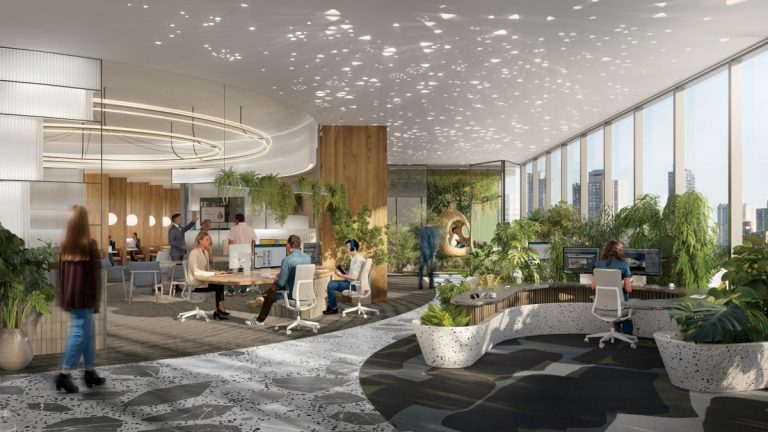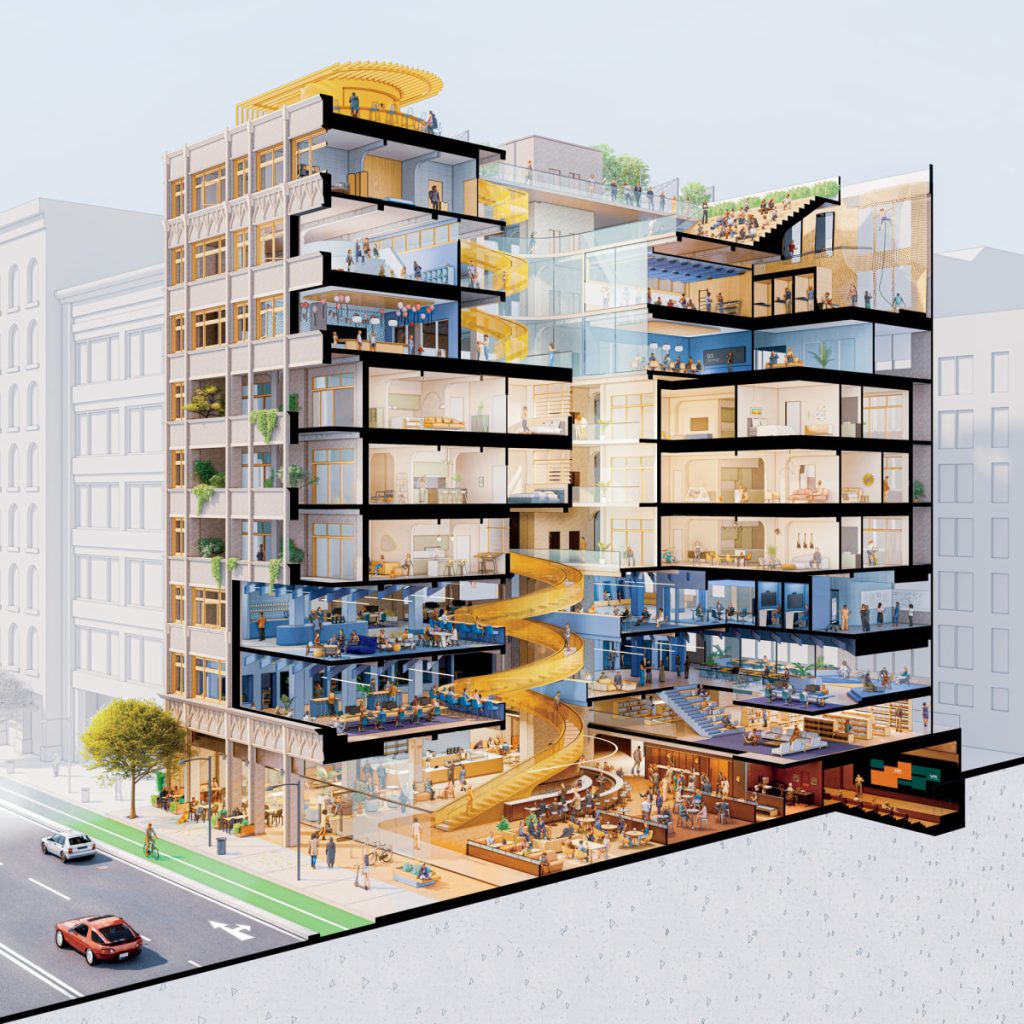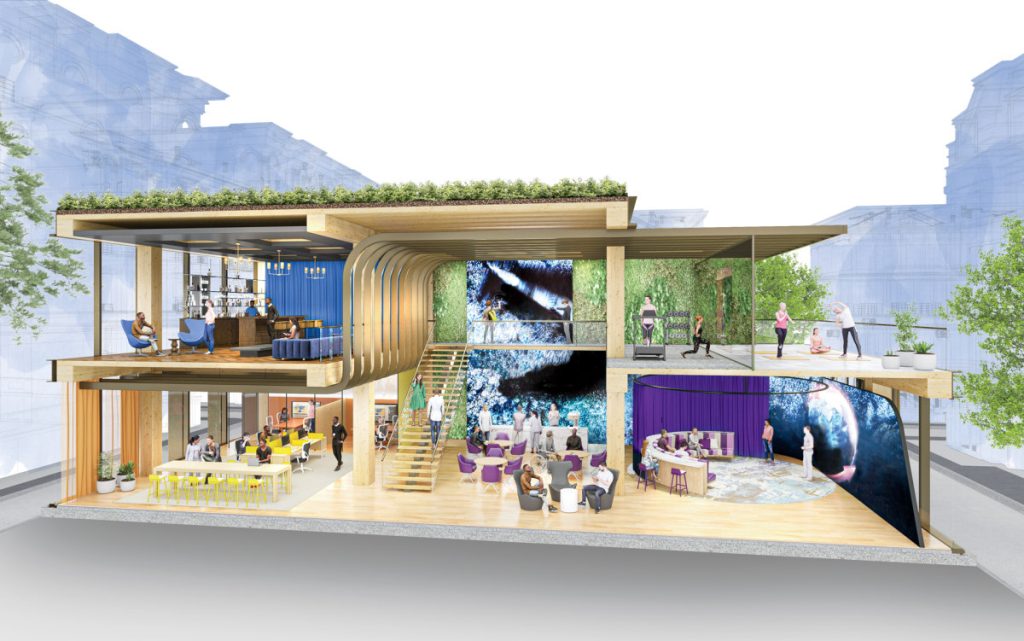2024 – The Future of Office Design

It’s hard to not look back over the last few years and realise how much has actually changed. We spoke many times about the impact that the global pandemic had but we, at Sketchlabs, feel that it really has coincided with many other social and cultural events which means that when it comes to the workplace – things have really changed.
And that’s why we are taking the time today to talk about something which is a common theme in our industry and something which will also impact you and your business.
Office design.
It dictates everything and importantly, the cultural attitudes that have evolved over the last few years with the growth of hybrid and blended working.
In today’s blog we are going to look at some of the more common themes of office design and what your space needs to think about when building the office that people want to return to.
The Problem: Office Design
We’ve become comfortable. Too comfortable some could say. Lazy politicians being the first…
The pandemic meant that we changed the way we work and we say the amazing flexibility of work with tools and instruments that we were using just a fraction of the time.
Because we experienced such a dramatic change, getting people back to the office is harder. The lack of spending time commuting, the peace and quiet of the home, the ability to have a form of social life pre-and-after work all have significantly impacted on how people think about work.
Office design clearly showed hierarchy’s, you have to put up with certain co-workers, you can’t control the thermostat and open plan offices can be noisy whilst lacking privacy for important meetings.
Getting back to the office is hard! Businesses are having to do something that they have never really done before – become promoters of their workspace and why returning to the office is a priority for some industries moving forwards.
In a study produced by Fast Company, they looked at different types of solutions to these very problems and consulted with architects and business leaders to understand what needs to take place in order to achieve this return.
Solution One: Kill The Commute
Design firm, Spaces Of analysed one of the big issues which was the commute.
No one wants to lose hours in the car/public transport. The solution then was to bring the office to the home. Moreover, create multi-functional buildings which combine home, office and leisure facilities like in the 1940s.
Affordable rent for small apartments, communal spaces for product launches and big events, daycare facilities – all in one space. Socialising is then left to the surrounding city which has everything else you need.

Solution Two: The True Hybrid Office
We are seeing Hybrid office space become more common.
Businesses are moving to three days in the office with two outside. Therefore the way we think about that office space has to change. Design firm NBBJ takes from nature in designing this workspace. People are like “orchids, tulips, and dandelions” thriving in their own way.
For NBBJ, you create shared work desks, solo pods and ample greenery surrounding the environment to help with stress reduction. Biopholia is a major science helping to shape the kinds of plants we use in offices to change our brain chemistry.
Solution Three: Full-On-Remote
Business leaders are abandoning their offices all together.
Office space is on the threat of extinction – or so you would think. Design firm SO-IL have decided that the idea of the air-stream digital nomad is the best solution.
Because office design is now moving more remote, how we use smaller spaces, individual pods and even cabins which can be erected quickly and cost-effectively, things such as “gig-houses” may provide the digital future of the present.
A Gig-House will allow staff to go to remote cabins and check in to the online structure of the business.
Solution Four: A Gen Z office
Nearly 60% of all Gen Z workers didn’t know office life before the pandemic.
This causes problems within itself where Gen Z workers who have been used to WFH solutions have been paramount to their own careers.
Getting Gen Z back into the office is about providing choice. Design firm, Gensler believes that the office design solution is about creating different spaces in different areas to allow the Gen Z worker to move seamlessly between.

I.e. On the first floor there will be a coffee bar whilst behind a stair well there will be a breakout room. On the second floor there may be hot-desking whilst on the opposite side there will be presentation areas and so on.
The importance of this layout is that Gen Z don’t see the hierarchy structures but experience mentorship wherever they work.
It’s becoming hard to not see where office space is taking off and where new opportunities are arising. With remote and hybrid work becoming a huge part of the work-life balance equation, businesses need to carefully consider design, function and utility.
In doing so, employees are going to drive the return to work whilst also reshaping office space design for the future.